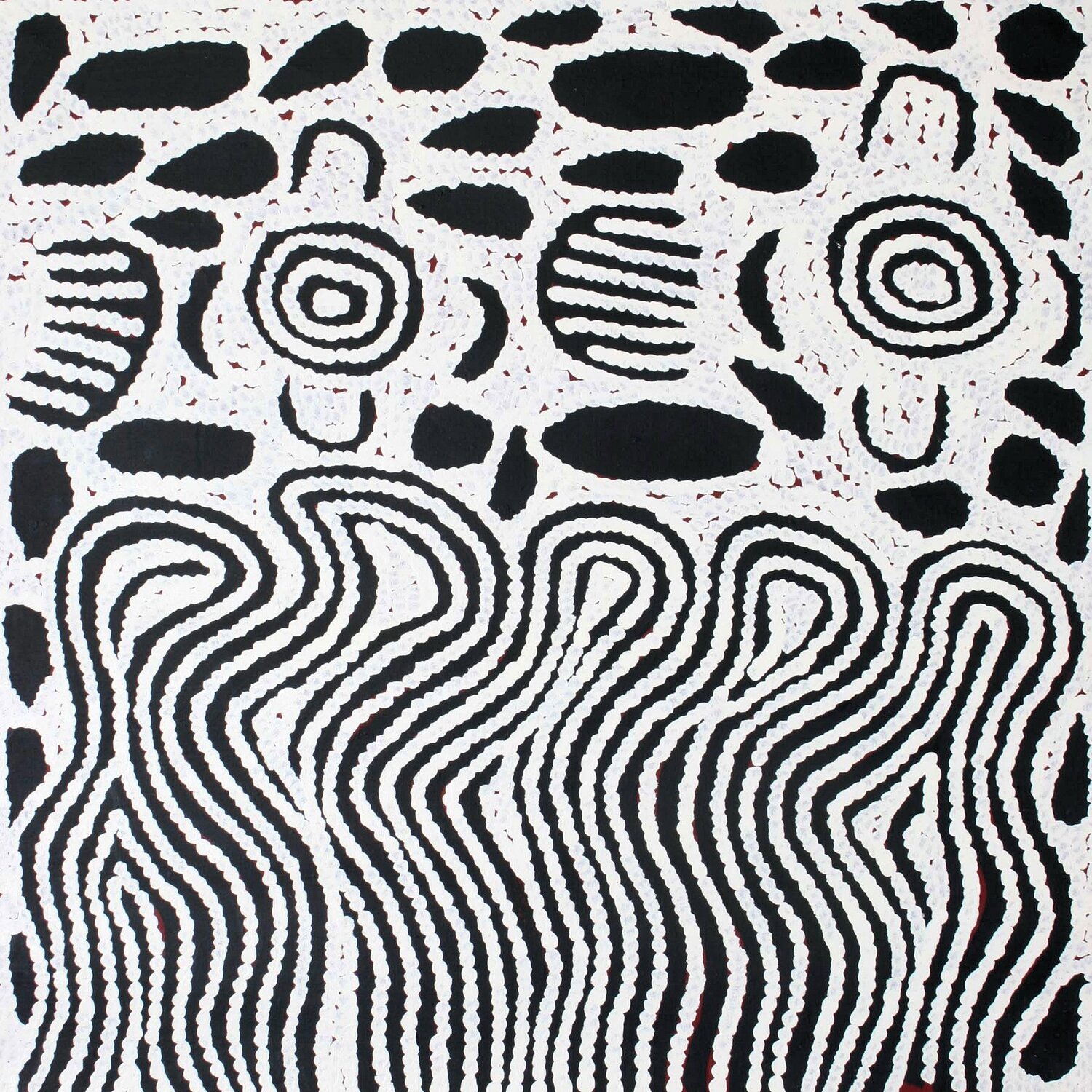Minyma Tingari, 2000 (91x91cm) by Barbara Reid
"Minyma Tingari (Women of the Tingari), 2000" by Barbara Napangarti Reid masterfully depicts aspects of the secret and sacred Tingari Cycle, a spiritual blend of story, song, and ceremony. This painting represents the site known as Tjukurla in the Gibson Desert, Western Australia, narrating the stories of Tingari ancestors who traveled vast landscapes, performing rituals that shaped the land formations of specific sites.
The natural environment of Tjukurla is characterised by expansive sandhills, rockholes with water, and various bush foods. In this work, Barbara illustrates the Tingari women with U shapes as they work near ceremonial sites, depicted by concentric circles. Linear patterned U shapes represent windbreaks protecting the women from the harsh desert winds. The black ovals signify pintalypa, a bush apple, highlighting its importance in the area. The pintalypa is a small green fruit with poisonous black seeds; only the green exterior is edible. Stratified, elongated U shapes symbolize puli or rock formations, which are also related to body paint worn by women during sacred ceremonies.
The Tingari Cycle events are secret and sacred, involving Dreaming ancestors who performed rituals that created various land formations. These ancestors, accompanied by novices and followed by Tingari women, have their travels enshrined in song cycles. These song cycles are crucial for post-initiatory teachings and provide explanations for contemporary customs.
Barbara’s use of traditional symbols and vibrant colors in "Minyma Tingari (Women of the Tingari), 2000" captures the essence of the Tingari stories and their connection to the land. This painting is a vital cultural artifact, preserving and honoring the sacred narratives and traditions of the Ngaanyatjarra people

